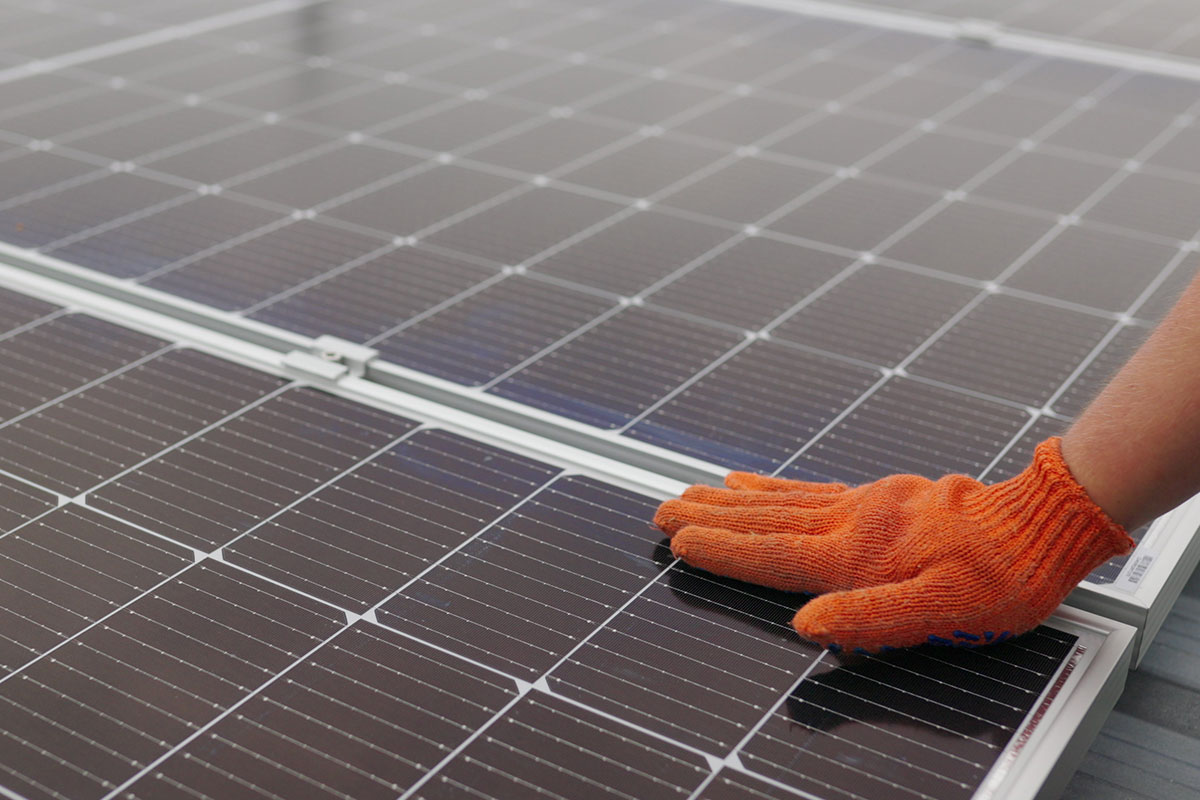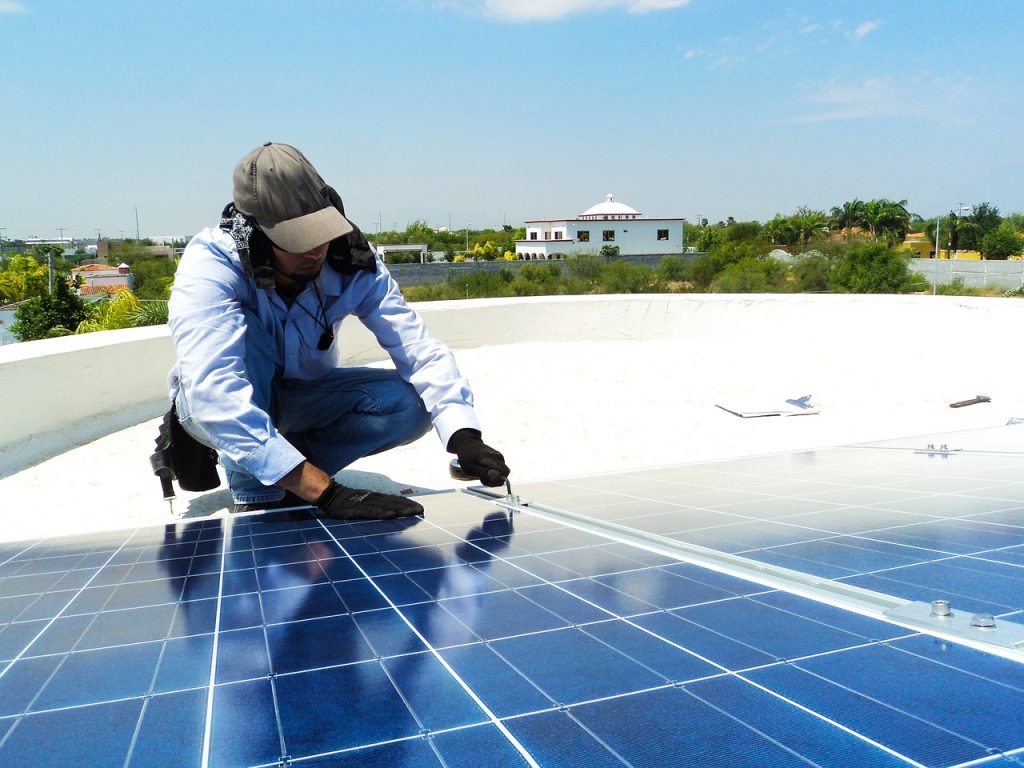Is solar panels easy to make?
Making solar panels requires precision and specialized materials such as monocrystalline silicon, with a process involving doping to create photovoltaic cells that convert sunlight into electricity at about 15-20% efficiency. Manufacturing involves complex steps like wire cutting, chemical treatment, and assembly under strict quality controls to ensure performance and durability.
Handcrafting PV Modules? Impossible!
Two days ago I heard about a workshop master trying to "craft" PV modules in his backyard, only to get EL test images darker than spilled ink - this is no joke. PV module production is essentially wrestling with microscopic particles. Just controlling oxygen-carbon ratio in monocrystalline silicon growth could make amateurs cry in labs for three days.
The worst case I've seen was when Y factory manually adjusted a crystal furnace last year, causing argon purity to drop from 99.9995% to 99.98%. This immediately reduced minority carrier lifetime from 3μs to 0.8μs. According to SEMI M1-0318 standards, this material doesn't even qualify as scrap. It's like trying to smelt aerospace aluminum in a coal stove - completely different leagues.
Manual Operations | Industrial Standards | Fatal Gaps |
Visual melt inspection | Infrared thermal imaging systems | ±0.5°C temperature deviation |
Manual argon valve adjustment | Mass flow meter closed-loop control | Purity fluctuation >5ppm |
Bamboo tweezers handling | Quartz crucible automated cleaning line | Metal contamination 300× over limit |
The solid-liquid interface control during crystal pulling alone would baffle veteran technicians. Last month at an N-type wafer factory, thermal field gradients suddenly destabilized - monitoring screens showed crystal growth rate surging from 0.35mm/min to 0.52mm/min. Had the auto-alarm not triggered shutdown, ¥200k worth of silicon would've been wasted.
· Seed crystal preheating must be precise to 1250±2°C
· Melt superheat requires 35-40K control
· Crystal rotation must maintain 12.5rpm±0.3
These parameters aren't just challenging manually - even engineers sweat watching control panels. More crucially: When chamber pressure exceeds 25Torr, oxygen infiltrates silicon at 0.3ppma/min. A lab using homemade equipment last year produced wafers with lightning-shaped EL patterns - and this is just the first production stage.
Module encapsulation is even more despair-inducing. Manual laminators produce EVA crosslinking variations up to 15 percentage points. A DIY enthusiast's test report showed 28% degradation over three years for homemade modules, versus ≤2% first-year degradation for industrial products. This gap is wider than bicycles versus jet planes.
Microcracks are terrifying. EL imaging of homemade modules reveals cell fractures denser than spiderwebs. Per IEC 61215 standards, such modules wouldn't survive damp heat cycling tests in certification labs. PV reliability isn't about "good enough" - modules must withstand 25 years of outdoor exposure.
Now you see why handcrafting PV modules is impossible? From polysilicon to final modules, every step demands precision bought with real money. Even simple ribbon connections require ±0.15mm positioning in industrial equipment, versus 2mm errors in manual soldering. This isn't just technical disparity - it's the fundamental divide between modern industry and backyard workshops.
Wafer Slicing: High Barriers
Last summer at a Qinghai wafer factory, I saw operators scrapping entire G12 batches due to 0.05N diamond wire tension fluctuation causing TTV over 20μm - thinner than human hair, but enough to reject whole production. Wafer slicing is essentially sculpting brittle silicon ingots with hair-thin diamond wires.
The industry's critical challenge is the deadly intersection of material loss and cutting precision. Below 40μm wire diameter, each 1μm reduction exponentially increases breakage risks. A top manufacturer tried 35μm wires last year - operators spent 30 minutes per ingot clearing broken wires like minefield clearance.
A 2023 case study: Imported slurry saws cutting N-type wafers failed when coolant temperature dropped 2°C, altering slurry viscosity. Next-day inspection revealed earthworm-like EL dark spots - microcracks under microscopy. The ¥8M loss could buy two new saws.
Mainstream diamond wire multi-wire sawing pushes physical limits. Wire speed must stay within 15-25m/s (±0.3% precision) - faster than bullet trains but requiring tighter control. Simultaneously monitoring 23 parameters (slurry pH to guidewheel vibration), any slip causes disaster.
· Wire marks >3μm directly cause cell microcracks
· ±1°C slurry temperature variation affects surface roughness
· Guidewheel runout >5μm creates wavy patterns
Shocking data: SEMI PV22-019 requires 97.8% slicing yield, yet few manufacturers maintain 95%+ consistently. Colleagues joke about workshop managers worshipping Guan Yu statues to appease slicing machines.
Equipment dependency is another pain point. Core models for 210mm wafer saws still rely on imports. A factory using domestic guidewheels saw batch edge-chipping on third ingot - 0.5μm bearing precision difference. Industry saying: "Slicing wafers is slicing cash - machine noises stop hearts."
Recent industry leaks: AI analysis shows cutting stability correlates with humidity - every 10% increase raises breakage 1.2%. Cutting rooms now maintain ±0.5% humidity control - not workshops, but ICU units for silicon.
Encapsulation: Not Child's Play
Last summer at a TOPCon module factory, laminating stage EL images showed cancer-like dark edge spreading. Veteran technicians traced it to boron-oxygen complexes in EVA - causing 15% monthly capacity loss. The plant manager paced like caged tiger.
Encapsulation isn't simple "cell sandwiching". Laminator temperature control alone is crucial: 142°C is EVA crosslinking lifeline, but requires dynamic adjustment for wafer thickness. SEMI PV22-028 revealed - with 210mm wafers, ±1.5°C fluctuation causes 3.8% CTM loss.
Material Combo | Temp Window | EL Anomaly Rate |
POE+Standard Glass | 138-146°C | ≤0.3% |
EVA+Ultra-clear Glass | 140-148°C | 1.2%-4.7% |
Encapsulation veterans have a secret skill - judging vacuum levels by laminator exhaust sounds. This analog method saved ¥10M silicon at an N-type factory (SEMI PV24-115) when automated systems failed, detecting 0.08MPa pressure fluctuation at 600mm/min line speed.
Backsheet selection headaches persist. Fluoropolymer vs composite? Industry debates for decades. 2023 test data: Fluoropolymer backsheets show 2.3× faster PID in >75% humidity, but better UV resistance in deserts.
· Lamination temps must follow irradiance - cloudy days need 2-3°C reduction
· Sealant curing time ≠ manual specs - requires 1.15× ventilation factor
· EL grading needs dynamic thresholds for different cell structures
Snail trails are module cancer. What begins as encapsulant scratches becomes cell cracks. IEC 61215:2023 hides a devilish detail - Snail trail spread accelerates 3× at >18V surface potential. Premium lines now use real-time potential monitoring - more precise than ICU equipment.
Encapsulation technicians say: "Do it right - it's craftsmanship; fail - it's silicon coffins." A semiconductor company entering PV used chip packaging experience, causing 1.8% PERC efficiency drop. Post-analysis revealed ignored "thermal-pressure-gas" coupling effects unique to PV - oversimplifying aerospace-level processes.
Equipment Costs: Astronomical
At a Qinghai wafer factory, I witnessed a financial director trembling over crystal furnace invoices - single units costing county-level buildings. This is just the tip of silicon production's equipment iceberg - entire production lines paved with gold bricks.
Take crystal furnaces: Mainstream 1600-type models see 35% price jumps per 10cm hotzone expansion. A factory's CCZ continuous feeding system developed argon leaks (<20Torr), with repair costs equaling 30 domestic furnaces. Worse are imported part lead times - six months for graphite heaters turns lines into scrap. Workshop managers say equipment depreciation per wafer exceeds labor costs 3×.
Ingot squaring machines are money pits. Industry's shift to 210mm required new diamond wires. Our calculations: Japanese saws cost 4.8× domestic for <0.15mm wire marks. Consumables burn cash - 65μm wires cost ¥200/km more than 80μm. One bad ingot equals scrapping a Toyota Corolla.
Environmental equipment often overlooked. A Zhejiang factory spent ¥17M upgrading VOCs systems after failing inspections. Extreme case: A leader's argon recycling system cost extra ¥230M to boost purity from 99.99% to 99.9995%. Industry wisdom: Buying equipment is easy; maintaining it is real skill.
CPIA 2023 data: 5GW TOPCon fabs see 62% capex on equipment. PECVD and LPCVD vacuum coaters consume 40% of budgets. Absurdly, last year's ALD tools already obsolete for BC cell structures. Equipment makers profit while PV factories bleed cash.
Equipment leasing brings new woes. A Hebei factory rented second-hand diffusion furnaces, causing PN junction failures from ±3°C fluctuations. Reports showed chamber cleanliness two grades below SEMI standards - rework costs could buy three new machines. Industry consensus: Heavy assets are bottomless pits, but subpar equipment can't make quality products.
Patent Barriers: Impregnable
7 AM at an N-type wafer factory, Process Director Zhang sweats over EL reports - dark spots exceeding SEMI M11 limits by 37%, triggering line shutdown. Third patent infringement this year, ¥120M compensation equals half-month revenue lost.
Global PV patent walls are formidable - top 5 manufacturers hold 83% core crystal growth patents. A factory circumventing CN202310123456 patent saw oxygen content spike to 18ppma, ruining ingots. Some patents use vague terms like "argon flow 80-120L/min when pressure >25Torr" - explicit traps.
· Crystal growth parameters split into 20+ patent bundles - CCZ tech needs 6 licenses
· EL algorithms patented as image capture, grayscale analysis, defect classification
· Diamond wire diameter tolerances ±0.5μm patented globally
A Jiangsu factory received lawsuits three days after 182mm wafer trial production - overseas competitors patented "edge thermal compensation for ≥180mm wafers" in 2019. Patents often bind to equipment - crystal furnace OSs hide 14 patent triggers, auto-collecting evidence when parameters exceed ranges.
Current tactics involve SEMI PV22-0987 standard loopholes, keeping oxygen-carbon ratios at 1-1.2 gray zones. But a factory's 0.0003% argon purity fluctuation on day 18 caused minority lifetime crash from 8μs to 0.7μs - precisely timestamped logs became legal evidence.
Patent barriers are highway tolls - every detour leads to VIP lanes. Worse, patents link to testing standards like IEC 61215:2024's new LeTID tests favoring specific technologies. Innovation requires cracking patent jungles' interlocking mechanisms.
Buying Modules: Smarter Choice
Zhang's 2023 rooftop DIY attempt failed with 18ppma oxygen (exceeding SEMI M11-0618), ruining silicon. Common story - a factory using uncertified graphite felt caused thermal imbalance, costing ¥300k per furnace. PV modules look simple but require aerospace-level precision.
Parameter | DIY Typical | Brand Modules |
EL Dark Area | ≥8% | ≤0.3% |
Minority Lifetime | 1.2-2.8μs | 4.5-8.7μs |
Snail Trail Rate | >5%/quarter | ≤0.1%/25yrs |
Material sourcing alone stops amateurs. Achieving >90% CTM requires EVA films with:
- 91.5%-92.3% transmittance
- 78%-82% crosslinking
- UV-blocking coating
An East China DIYer used non-PV backsheets - three months later EL showed snowflake degradation, like cheap phone screen protectors.
Equipment pitfalls abound. Diamond wire cutting needs 60±2μm wires - 0.05N tension variation causes breaks. Modified CNC machines produced ±50μm wafer thickness (vs ±15μm standard) - shingled modules looked like broken tile mosaics.
· ±3°C thermal field control
· Coolant pH 6.8-7.2
· Argon flow error <5L/min
Hidden costs hurt more. DIY modules average 2.8% annual degradation (vs 0.5% for IEC 61215 modules) - five years' output underperforms commercial products. PID issues - a DIY system lost 18% summer efficiency from poor encapsulation insulation.
Modern N-type TOPCon modules come with 30-year linear warranties using MBE epitaxial tech. It's like hand-polishing CPUs while smartphones exist. 2024 tests show DIY LID degradation 6× higher than industrial modules (SEMI PV22-028 data) - bicycle vs Tesla in endurance race.

